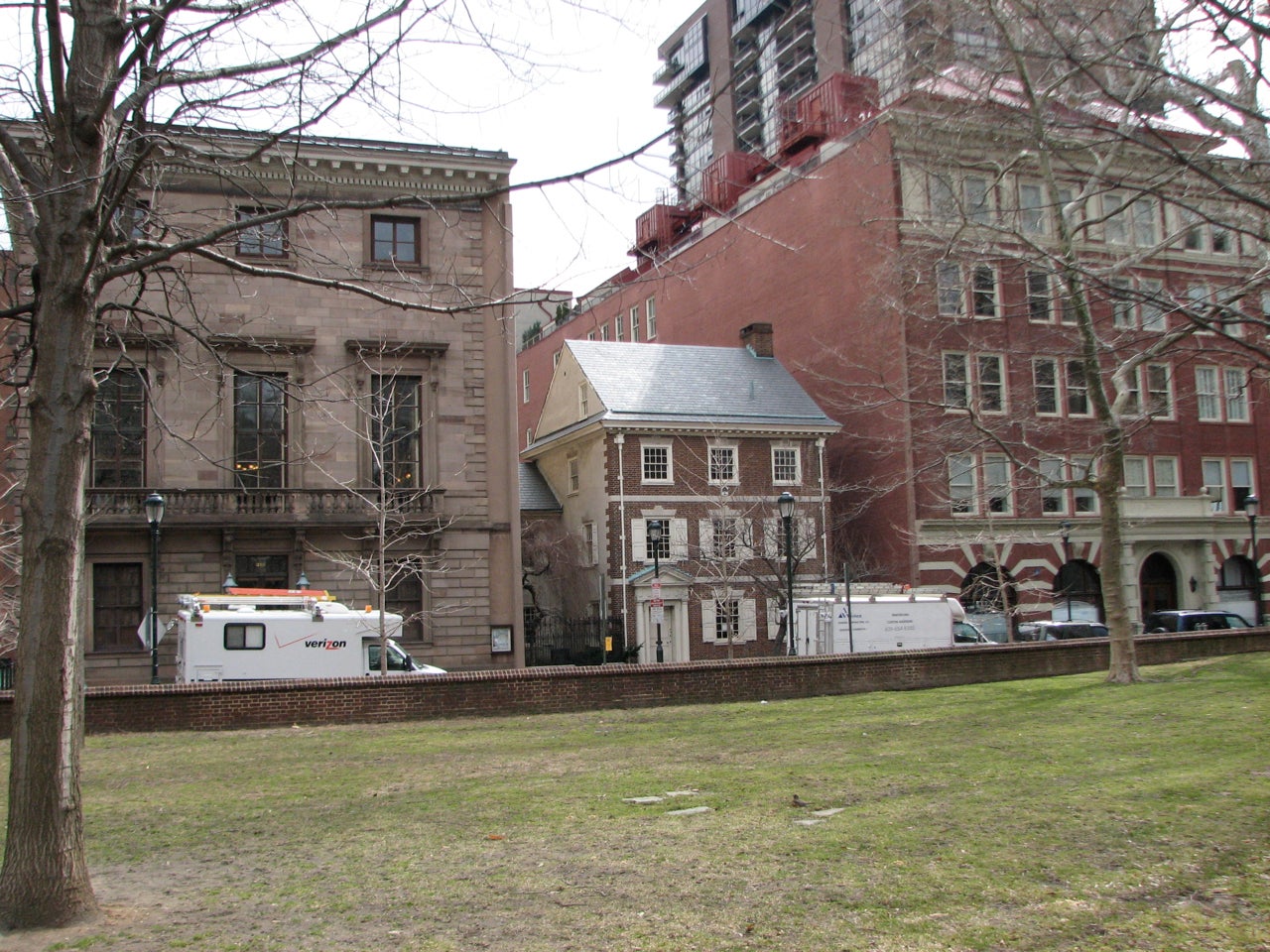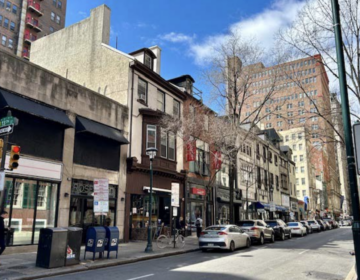Dilworth House can be partly demolished, Court says

It’s been almost eight years since the Philadelphia Historical Commission ruled that the owners of the Dilworth House on Washington Square could remove a portion of the building and replace it with a 16-story apartment tower. And it looks as though the litigation phase of that process may finally be winding down.
Last week, the Commonwealth Court of Pennsylvania reinstated the Commission’s approval, which has been under appeal since 2007. In doing so, it overturned the Board of L&I Review and the Court of Common Pleas for the second time. Paul Boni, a lawyer representing the neighbors who opposed the project, said they haven’t yet made a decision about whether they’ll appeal the decision to the state Supreme Court.
“The needs of journalism do not always align with the realities of legal practice,” Boni said.
RECENT HISTORY
The Dilworth House was built in the 1950s for Mayor Richardson Dilworth, in the colonial revival style that was favored during the redevelopment of Society Hill. Today, the three-story brick house is sandwiched between two larger buildings on the east side of Washington Square.
The house was designated historic along with much of Society Hill in 1999. It’s owned by John and Mary Turchi, who initially wanted to demolish the entire house, but later proposed a project that would keep the most visible part of the house facing the square, demolish rear portions of the building, and replace them with a 16-story condo tower.
The Historical Commission voted in 2007 to approve that plan, which it interpreted as an alteration rather than a demolition, over the protests of the Society Hill Civic Association and other neighbors. Those protestors have been appealing the decision ever since.
DUE DEFERENCE
On the first appeal, the Board of L&I Review overturned the Historical Commission’s approval of the project, saying the proposal actually constitutes a demolition rather than an alteration and therefore should trigger a higher standard of review than the Commission employed.
The Turchis appealed to the Court of Common Pleas, which upheld the Board’s decision. When they appealed again, the Commonwealth Court overturned the board, saying it hadn’t given proper deference to the Historical Commission in interpreting the preservation ordinance. That opinion, now referred to as Turchi I, remanded the case to the Board of L&I Review, so the Board could reconsider its decision with due deference to the Commission.
But the Board doubled down. In 2012, it ruled again that the Historical Commission had erred in granting approval of the proposal. Even giving the Commission wide leeway in interpreting the ordinance and its own rules and regulations, the Board said, the proposal was more than a mere alteration of the historic property. The landowners should have been required to prove that the “demolition”—the Board’s interpretation—was either in the public interest or required because of a legitimate hardship. The rear portion of the building, the Board found, included “distinctive features and construction techniques that are consonant with the purposes of the [Ordinance] and should therefore be preserved.”
The landowners appealed again, and again were rebuffed by the Court of Common Pleas. Earlier this year, the Commonwealth Court heard arguments for the second time. Paul Boni represented the neighbors who opposed the project, and Philip Rosenzweig represented the landowners. Andrew Ross, the deputy city solicitor, also made arguments on behalf of the Historical Commission.
In its decision from last week, the Commonwealth Court ruled that the Board of L&I Review had once again failed to give the Historical Commission the deference it deserves in interpreting the preservation ordinance.
“After reviewing the Ordinance, the record, the Historical Commission’s Decision, the Board’s Remand Decision, and Turchi I,,” the Court wrote, “we conclude that the Board exceeded its authority in sustaining Objectors’ appeals because the Board relied on its own interpretation and application of the Ordinance’s provisions in contravention of Turchi I.”
This time, the Commonwealth Court declined to remand the case back to the Board. It noted that the Historical Commission is required by the ordinance to be populated with preservation experts, while the Board of L&I Review is not.
“The Historical Commission’s expert role may not be overridden based on a de novo review by the Board, which, as observed in Turchi I, is not required to have members who have any specialized expertise in historic preservation,” the Court wrote.
LASTING STANDARDS?
“I think the message should be loud and clear,” said Philip Rosenzweig, the lawyer for the landowners, “that when a government body has an expert authority that is empowered by means of its expertise and to make determinations, that those determinations, particularly when they are unanimous, need to be respected and adhered to as the governing determination of the body.”
Rosenzweig said that the plans to redevelop the property are still in place. There are unresolved zoning issues, though, which could prevent the project from moving forward right away.
“After eight years of battle,” he continued, “we are humbled by and very satisfied with the Commonwealth Court’s ruling and the restoration of the Historical Commission’s ruling.”
Andrew Ross defended the city’s participation in the case against charges that it was simply trying to help get the project approved for development’s sake.
“We had an interest here, and it wasn’t, ‘Let’s support the developer,’” said Ross. “It’s because there were procedural issues on how the Historical Commission operates and how its decisions are reviewed on appeal. And we want to have it done correctly and make sure everyone understands what the legal standards are.”
WHYY is your source for fact-based, in-depth journalism and information. As a nonprofit organization, we rely on financial support from readers like you. Please give today.




